St Agnes' Home / Hostel for Girls, Croydon, Surrey
In 1897, the Waifs and Strays Society took over the St Agnes' Home for Girls on St James' Road, Croydon. It housed twenty 'crippled' girls aged from 14 to 16, perhaps transferred from other of the Society's homes when they reached the appropriate age. The girls were taught handicrafts such as needlework, knitting, and basket-making. The items they produced could be sold to contribute towards the running of the home.
In October 1900, the home moved to larger premises in a former church institute at 7 Wellesley Road, Croydon, where 30 girls could be housed. The location of the home is shown on the 1913 map below.
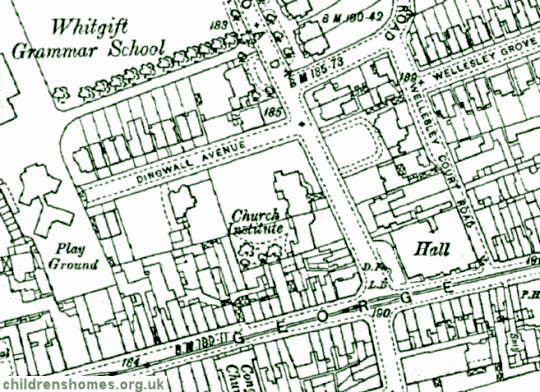
St Agnes' Home for Girls site, Croydon, c.1913.
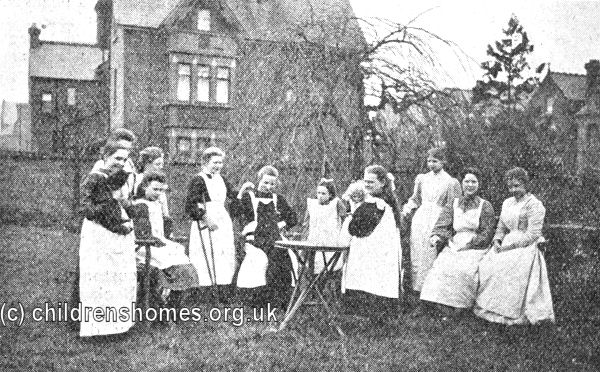
St Agnes' Home for Girls, Croydon, c.1903. © Peter Higginbotham
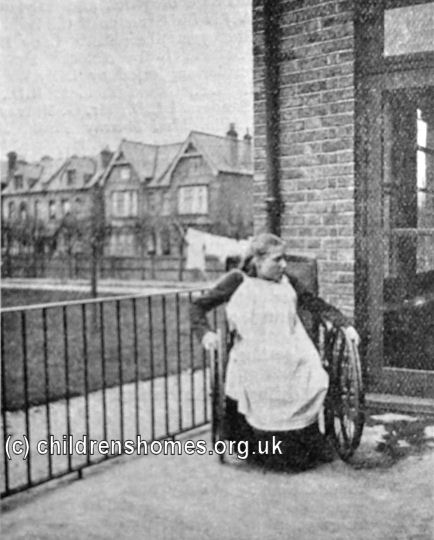
St Agnes' Home for Girls, Croydon, c.1903. © Peter Higginbotham
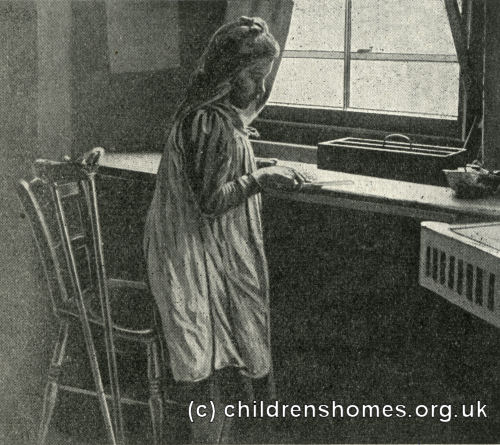
A resident of St Agnes' Home for Girls, Croydon, c.1910. © Peter Higginbotham
From 1913, the home was used as a hostel for severe physical disabilities who were unable to lead independent lives.
On March 12th, 1914, The Queen paid an informal visit to the home. Her Majesty, who wore mauve dress and hat, arrived by car at 3.15p.m. and stayed for about hour. The royal party visited the chapel, work-rooms, dormitories, and kitchen, and the verandah set apart for tuberculous children. The Queen showed keen interest in the girls' fine sewing and basket-work, and selected some examples of the latter to take away with her. She spoke to a resident name Ada Grossett, aged 12, who, though having only one arm, was a skilful needlewoman.
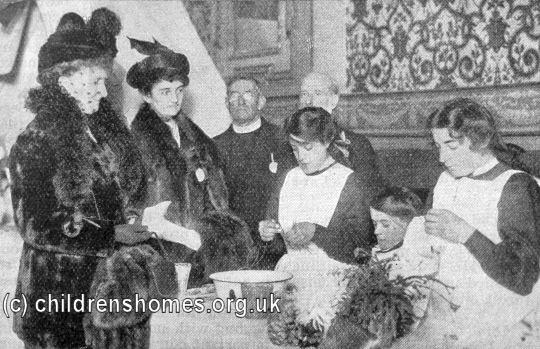
Lady French at St Agnes' Home for Girls, Croydon, c.1915. © Peter Higginbotham
In 1923, a new chapel was opened by the Bishop of Croydon. Two years later, a new altar was installed.
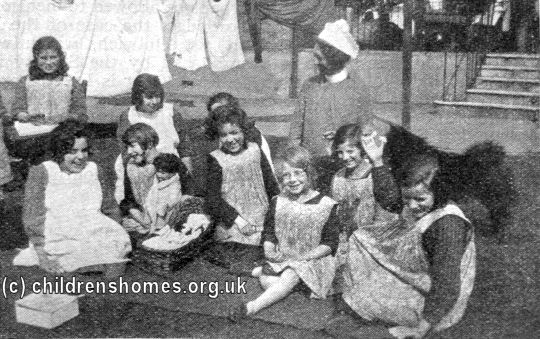
St Agnes' Home for Girls, Croydon, c.1928. © Peter Higginbotham
The home was closed in 1935, with some of the girls being transferred to the new St Agnes' Home at Pevensey Bay. The Croydon home's chapel was dismantled and taken to the Society's recently established Margaret Calliard Memorial Home at Wingfield in Wiltshire. The Wellesley Road building no longer exists.
Records
Note: many repositories impose a closure period of up to 100 years for records identifying individuals. Before travelling a long distance, always check that the records you want to consult will be available.
- Index of the Society's first 30,000 children's case files ordered by surname.
- Index of the Society's first 30,000 children's case files ordered by date of birth.
- The Children's Society Records and Archive Centre is at Unit 25, Springfield House, 5 Tyssen Street, London E8 2LZ (email: archives@childrenssociety.org.uk). Files for children admitted to its homes after September 1926 were microfilmed in the 1980s and the originals destroyed. Some post-1926 files had already been damaged or destroyed during a flood. The Society's Post-Adoption and Care Service provides access to records, information, advice, birth record counselling, tracing and intermediary service for people who were in care or adopted through the Society.
- The Society has produced detailed catalogues of its records relating to disabled children, and of records relating to the Children's Union (a fundraising body mostly supported from the contributions of children).
Bibliography
- Bowder, Bill Children First: a photo-history of England's children in need (1980, Mowbray)
- Church of England Waifs and Strays' Society [Rudolfe, Edward de Montjoie] The First Forty Years: a chronicle of the Church of England Waifs and Strays' Society 1881-1920 (1922, Church of England Waifs and Strays' Society / S.P.C.K.)
- Higginbotham, Peter Children's Homes: A History of Institutional Care for Britain's Young (2017, Pen & Sword)
- Morris, Lester The Violets Are Mine: Tales of an Unwanted Orphan (2011, Xlibris Corporation) — memoir of a boy growing up in several of the Society's homes (Princes Risborough, Ashdon, Hunstanton, Leicester) in the 1940s and 50s.
- Rudolf, Mildred de Montjoie Everybody's Children: the story of the Church of England Children's Society 1921-1948 (1950, OUP)
- Stroud, John Thirteen Penny Stamps: the story of the Church of England Children's Society (Waifs and Strays) from 1881 to the 1970s (1971, Hodder and Stoughton)
Links
- Hidden Lives Revealed — the story of the children who were in the care of The Children's Society in late Victorian and early 20th Century Britain.
- The Children's Society
Except where indicated, this page () © Peter Higginbotham. Contents may not be reproduced without permission.


